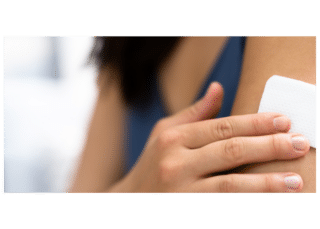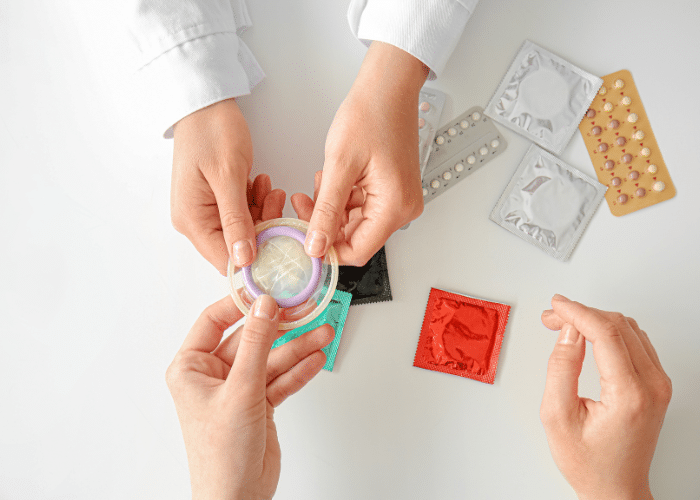Stay up to date with the latest Gevers news by signing up for our newsletter.
Contraception is not a novel concept for anyone in this day and age. In fact, due to the advances in science and technology, we can now find innovative contraceptives even in our local pharmacies and drug stores. But did you know that the field of contraception is also not new to the labyrinth of patent law?
One of the earliest discussions at the Board of Appeal of the European Patent Office (EPO) involving contraception can be found in T0074/93, relating to compliance with the industrial applicability requirement of Article 57 EPC. Claim 5 of the patent application under appeal in this decision recited:
5. Use of a composition claimed in Claim 3 or 4 for applying to the cervix of a female mammal capable of conception.
The Board argued that the use of a contraceptive by a female in the private sphere cannot be considered to fulfill the requirement of industrial applicability. It is noteworthy that the Board gave this opinion with regard to the right of any natural person to have their privacy respected and for patents to not adversely affect personal activities. Essentially, even though other features of the invention may be patentable as such, the private act of using such composition by a person in the private sphere was deemed to be against the essence of EPC.
As per Article 57 EPC, ‘An invention should be considered as susceptible of industrial application if it can be made or used in any kind of industry, including agriculture’.
The Board argued that the use of a contraceptive by a female in the private sphere cannot be considered to fulfill the requirement of industrial applicability. It is noteworthy that the Board gave this opinion with regard to the right of any natural person to have their privacy respected and for patents to not adversely affect personal activities. Essentially, even though other features of the invention may be patentable as such, the private act of using such composition by a person in the private sphere was deemed to be against the essence of EPC.
It is important to note here though that not all contraceptive use claims fall under this prohibition. For example, oral use of a contraceptive is generally not deemed to fall within this scope of private use, as noted e.g. in the minutes of opposition proceedings of EP0956024. The Opposition Division reasoned that the T0074/93 decision specifically relates to application at the cervix, which is intimately in the private sphere and for which no industrial application can be conceived. However, the same reasoning cannot be applied to oral administration, which can form part of industrial applications e.g. at a health institute. Although this patent application was not granted owing to lack of inventive step, the reasoning contained in the minutes of the opposition proceedings provides an interesting insight into the approach followed by the EPO.
In the same stead, EP2566490 and EP2741824 provide examples of use claims relating to contraceptives which were deemed to be patentable by the EPO. EP2566490 covers the use of a composition ‘… in female contraception’ and ‘… in the reduction of the incidence of pregnancy in a female population, or in the reduction of the incidence of fertilization in a female population’, and EP2741824 covers the use of a compound ‘…as an emergency contraceptive, wherein the administration of said tetrahydroxylated estrogen is performed through non-vaginal administration’.
Therefore, as per the case law developed at the EPO and through review of granted patent claims, certain uses relating to contraceptives can indeed still be patented without contravening provisions of the EPC.

Another aspect of discussions regarding contraception at the EPO have to do with their (perceived) medical use: is contraception considered to be therapy, which is always excluded from patentability under the provisions of the EPC?
According to the case law developed at the EPO, the answer to this question is a conclusive no. Therapy is generally seen at the EPO as the treatment or prevention of a pathological condition. Since pregnancy is not a disease, the prevention of pregnancy is not construed as therapy in the sense of Article 53(c) EPC (T0074/93). This development certainly paved an optimistic pathway for inventors involved in developing contraceptive technologies.
However, adding a bit of caution to this optimism, T 0820/92 declared that if a claimed method involves the administration of two or more substances, ‘if the purpose of the administration of one of the substances is treatment by therapy’, said claim falls under the prohibition of Article 53(c) EPC. Therefore, the entirety of the claimed subject-matter, not just partial features, should be non-therapeutic in essence in order to pass the Article 53(c) test.
Article 53(c) EPC prohibits grant of European patents in respect of ‘methods for treatment in the human or animal body by surgery or therapy and diagnostic methods practiced on the human or animal body; this provision shall not apply to products, in particular substances or compositions for use in any of these methods’.
Furthermore, as per T1635/09, even the use of a contraceptive composition whereby the concentration has been selected specifically to reduce side-effects is considered to be therapeutic. In other words, if the application demonstrates that the contraceptive reduces side-effects, it will have combined non-therapeutic effects (contraception) and therapeutic effects (prevention of a pathological side-effect). Thus, the standard use claim covers the therapeutic effects, which is not allowed as per Article 53(c) EPC.
Based on these insights, it may seem like there is only doom and gloom for those innovating in the field of contraception. Fret not and read on, because there are still many doors open for you to be able to protect your inventions without obviating Article 53(c) or Article 57 EPC.
Firstly, many patents have been granted that cover compounds as such, as well as compositions comprising said compounds, which are suitable for contraception. For instance, EP2588114 covers a ‘pharmaceutical composition suitable for oral administration … for use as a contraceptive for a female patient in need thereof’ and EP2551280 covers ‘a contraceptive peptide..’ with a specific sequence as well as its corresponding ‘nucleotide sequence’.
A kit for contraceptive use is also a promising option, e.g. EP2790688 covers ‘A multiphasic kit for use as contraceptive by successive daily oral administration….’ such that the kit comprises several distinct dosage units with defined concentrations of specific compounds. It must be kept in mind though that these compounds, compositions, kits, and the like must be novel on their own and not only due to their use in contraception, as these inventions cannot be classified as second medical use inventions.
Device or apparatus claims are also common in the field of contraception and provide another viable option for obtaining patent protection. For instance, many granted patents can be found covering devices for delivering contraceptive agents (e.g. EP1729819, EP2387383, and EP2424505) or devices for physical contraception (e.g. EP2346456, EP2043569, and EP2884951).
Another type of claim frequently seen in granted patents on contraception relates to different methods, be it a method of contraception (e.g. EP2343963, EP2819677, EP3701944, and EP2214578), or a method/process of preparation or manufacturing (e.g. EP1631255, EP2551280, and EP2734262), to name a few examples.
Therefore, the most promising claim types for obtaining patent protection for contraceptives are those that cover compounds, compositions, device, kit of parts, and the like, whilst use claims which are clearly industrially applicable and of purely non-therapeutic nature are also possible.
Beyond the EPO
The patent granting authorities in several other jurisdictions also generally follow an approach similar to the EPO. For instance, methods of preventing pregnancy have been considered to be non-therapeutic at least in Canada, UK, and New Zealand. Even though birth control has seen tumultuous times in the legislative arm in the US, patent records can be found for contraception related inventions dating back to as early as the 1930s (US2020107).
Some of the earlier US patents for non-invasive birth control date back to 1960s (e.g. US3449495 assigned to Merck, US3483233 assigned to Hoechst and Bruckner Trockentechnik, and US3502772 assigned to Organon and Akzona), befittingly so as the Pill became widely available in that time period. Notably, in contrast to the European situation, methods of therapy are not excluded from patentability in the US and, therefore, it is no surprise that distinctions between therapeutic and non-therapeutic effects do not seem to play a role in matters of patentability.
Conclusion
In conclusion, the case law developed at the EPO, specifically in view of industrial applicability and exceptions for patentability of medical therapies, provides useful direction to inventors interested in obtaining protection for their inventions relating to contraception. The most promising categories of claims would cover compounds, compositions, devices, or kit of parts. For use claims, contraceptive use by itself does not pose a problem and is considered non-therapeutic.
However, care must be taken if there are any therapeutic effects, either alone or due to combination with a therapeutic molecule, since such effects will place the invention under Article 53(c) EPC prohibition. Moreover, use claims where use is within the private sphere for which no industrial application can be conceived are also not deemed patentable in view of Article 57 EPC.
